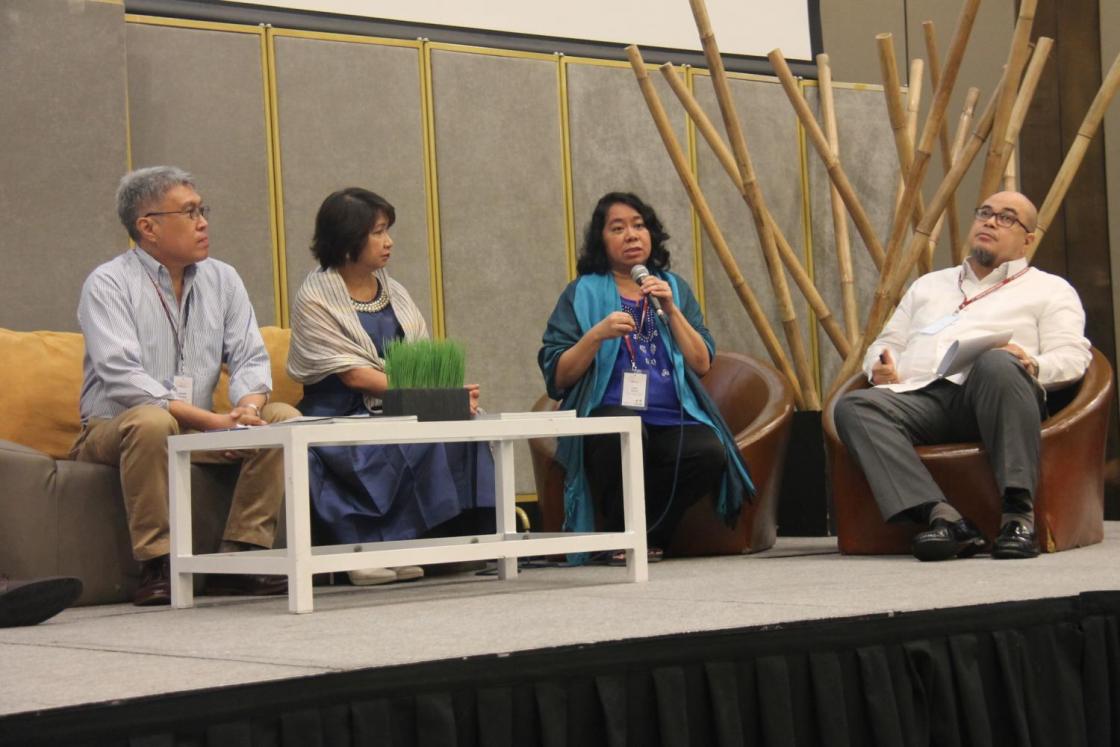
Part One
Recent policy discourse in the Philippines is revolving around what seems to be buzzwords: industry 4.0 and climate resiliency. The common denominator between this unlikely pair is straightforward. Both topics require policy-makers to not discount the future. While one warns about climate-change impacts on vulnerable populations, the other warrants concerns on potential labor displacement if Filipino companies choose to automate as the world gears up for industry 4.0.
This unlikely pair of topics has been put together in the recent 57th Philippine Economic Society Annual Meeting, dubbed “Rethinking Development Strategies” and held on November 7, 2019. The keynote address given by Department of Trade and Industry Undersecretary Rafaelita M. Aldaba on the country’s New Industrial Strategy delivered the context of the conference. The high-growth scenario in the Philippines, if the country hopes to maintain it in the face of new technologies, requires coordination across government agencies to ensure that human capital development and technological advancement support the sustenance of growth. The first panel session focused their discussion on how the Philippines can prepare for potential labor displacement at the advent of industry 4.0 with the expanded use of artificial intelligence. The second panel highlighted the need for sustainable development in the face of losing free environmental services due to climate change. Yet lacking in these panel discussions was the link between the two. A deeper look into the history of sustainable development reveals the link between the economy and ecology.
Brief history of sustainable development
Discussions on the impacts of human behavior to the planet began in the 1960s with the publication of Rachel Carson’s 1962 book entitled Silent Spring. While the world celebrated the success of the Rockefeller Foundation-led Green Revolution in Mexico and India in the 1940s to 1950s, the book warned against the hazards of the overuse of chemical pesticides that was becoming part of the conventional agricultural practices.
In 1972, another book was published: The Limits to Growth. This book by spouses Donella and Dennis Meadows alongside Jorgen Randers and William Behrens explicitly warned against what they saw as the world’s inclination to exponential growth. Using actual data over the period 1900-1970 on output, natural resources, and pollution levels, among others, the book carries a Malthusian warning of collapse before year 2100 when looking at business-as-usual simulation scenarios. The 30-year update of the book reveals many of their forecasts until 2000 were correct. In response, the United Nations World Commission on Environment and Development was founded in 1983. Headed by the Norwegian politician Gro Harlem Brundtland, the commission sought to identify long-term strategies to address environmental and ecological degradation and published the report Our Common Future in 1987. The book formally defining sustainable development being the type of development that “meets the needs of the present without compromising the ability of the future generations to meet their own needs” has also set the discourse on sustainable development around the world.
At the turn of the millennium, the state of the environment and natural resources continue to be causes for great concern in academe, across advocacy groups, and in the general civil societies across the world. In fact, another problem surfaced: climate change. The new millennium, therefore, saw former US Vice-President Al Gore becoming the poster boy for fighting climate change. In 2006, his book An Inconvenient Truth: The Planetary Emergency of Global Warming and What We Can Do About It reached masses around the globe when a documentary film accompanied the release of the book.
Link between economy and ecology
The link between the industrial revolution and climate change has been clear. The link was put forward to us by the Intergovernmental Panel on Climate Change by explaining that the increase in carbon-dioxide emissions and other greenhouse gases is the single main cause of climate change. The panel warns about warming of 1.5°C above pre-industrial age causing extreme climate scenarios like sea level rise, super typhoons in some areas and droughts in others. To put it another way, it was the First Industrial Revolution of the 1800s with the invention of the steam engine that triggered a chain of industrial developments. The 1900s, therefore saw two more industrial revolutions in heavy machinery and then in computers that led to high growth but also led to global warming due to the use of fossil fuels. The previous century had, therefore, seen an inclination towards growth and progress not seen anywhere in the pre-industrial age.
In view of all of these rapid changes, we will answer next week how must we rethink our development strategies to accommodate the balance we desire.
 Philippine Economic Society (PES)
Philippine Economic Society (PES)